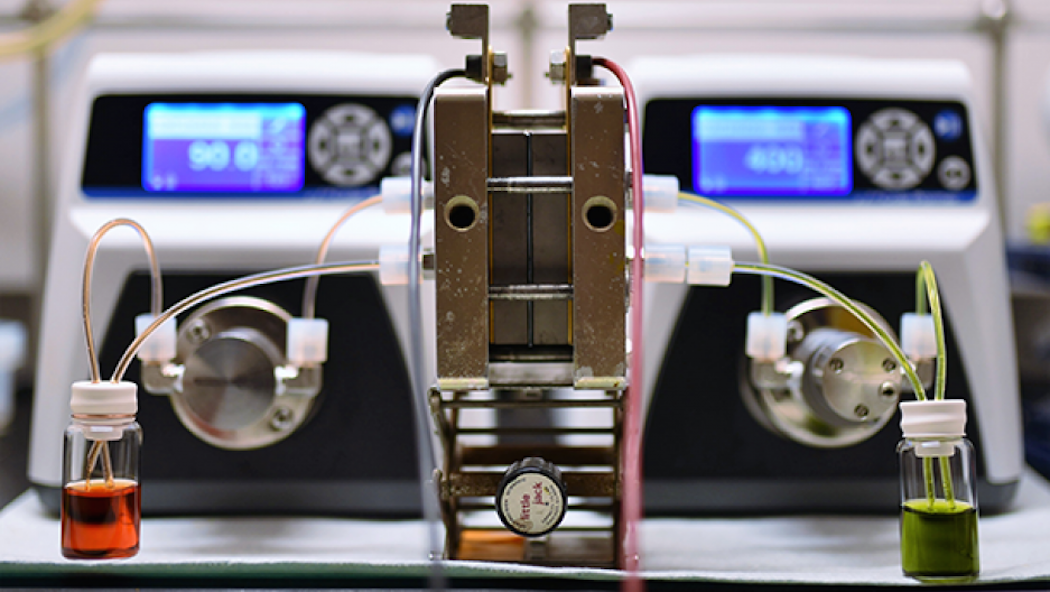
Steady Flow
A recent breakthrough may make the mega flow battery commercially viable in the near future.
Harvard scientists unveiled the flow battery—a battery designed to store energy in vats of chemicals. Now, developments based on that discovery reveal an improved design, one that that uses affordable, scalable, and non-toxic chemicals.
Flow batteries work by separating the energy storage from the electrode interface that releases the energy or charges it. Since they use chemicals that can store and transmit electricity, the amount of power a battery can generate is now limited only by the size of the tanks that contain positive and negative electrolytes.
The potential uses of this device are numerous. You can learn more in the video below:

Expensive flow batteries have been in use for years, but of course, expensive isn’t always practical. To that end, the researchers’ innovation is anchored on them being able to replace the costly vanadium with more affordable solutions.
Energy for All
Researchers behind the study believe that this technology is safe, cheap, and can be scaled down to easily provide sustainable energy for a single-family home or even scaled-up to power an entire neighborhood.
The scientists behind the study estimate it would take about three years for the technology to be developed for commercial use.
“This is certainly the most exciting thing I’ve worked on,” Michael Aziz, professor of materials and energy technologies at the Harvard School of Engineering and Applied Sciences, states. “Because the implications are so global. The greatest challenge facing humanity this century—I’m convinced — is finding the energy to power a civilization of 10 billion people without unacceptable consequences to the environment,” he continues.
Aziz also notes the important role that this plays in relation to creating a more sustainable future: “Renewable energy is front and center in that challenge, and this could really be a very significant enabler of renewable energy.”